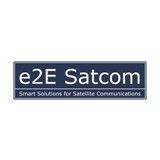PAGE CONTENTS
Objectives

Challenges
In developing each new wireless UT, a significant percentage of effort is spent solving the same set of real-time embedded development and test problems as peer and forerunning projects, leading to duplication within each manufacturer and across the industry as a whole. Tight bundling between the application software development environment and the target hardware further limits the potential for portability and reuse between contemporary products and subsequent generations. Combined with the low productivity associated with traditional debugging techniques, the overall effect is a significant reduction in development efficiency across the industry. In addition, unanticipated effort and surprises arising during integration and test late in the project are major causes of project schedule and cost over-runs.
Plan
Current Status
Phase 2b, Full Prototype has now formally completed. Phase 3, Commercialisation is schedule to start Q1 2016.
Companies

